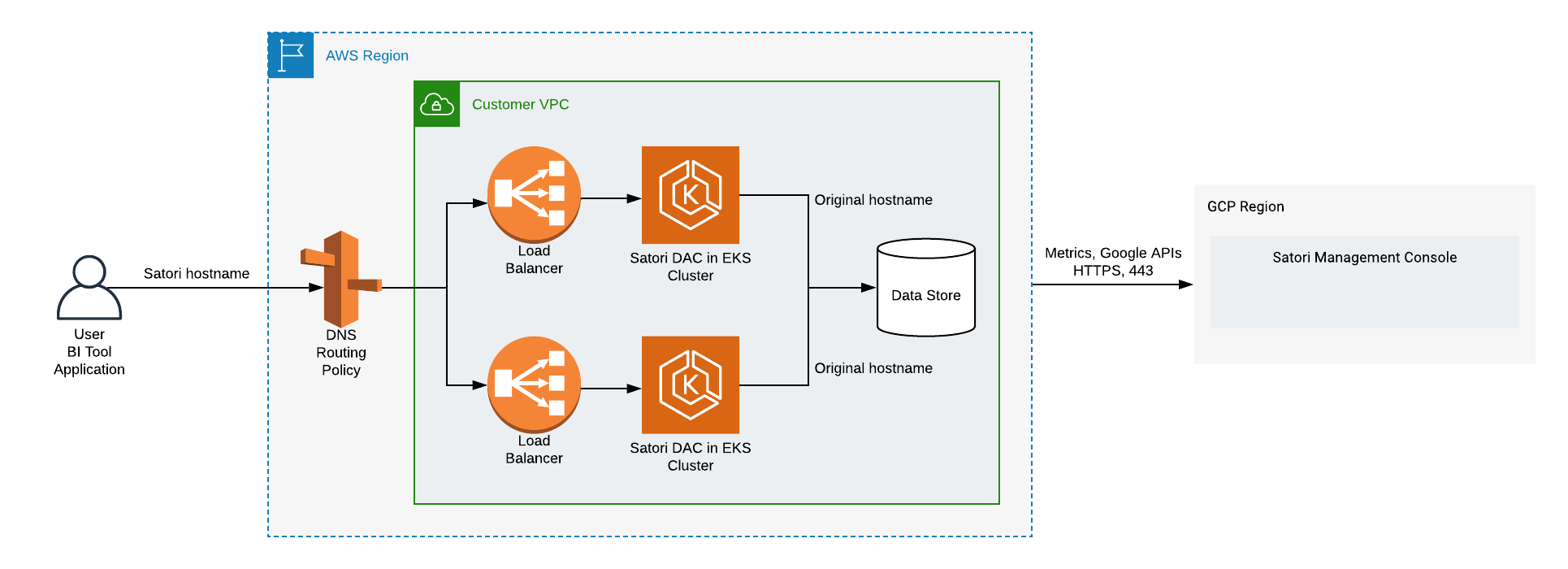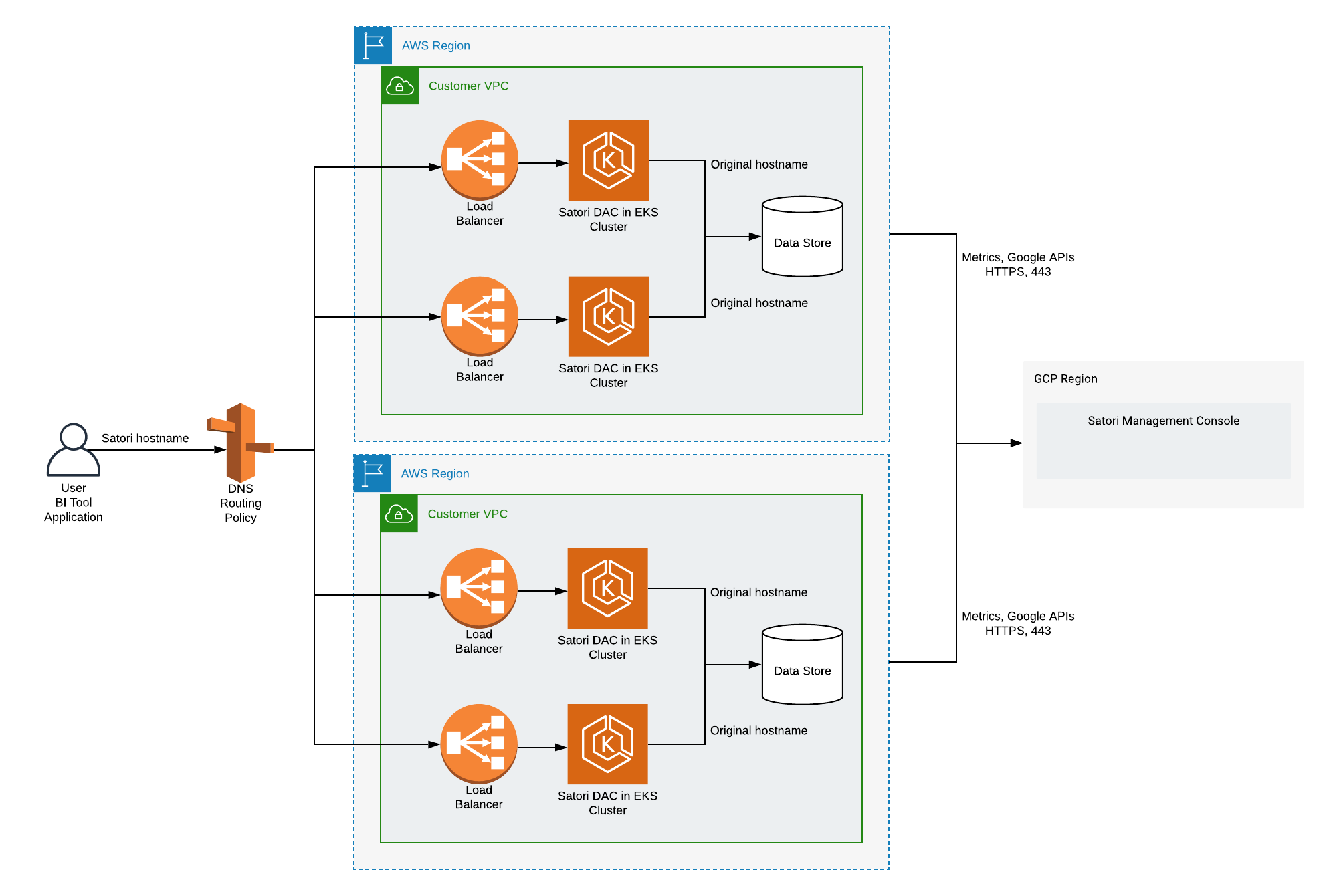Advanced Deployment Topologies
Satori's architecture is built in accordance with the best practices of a cloud-native design. It is, horizontally scalable and is distributed across multiple availability zones with no single point of failure.
For customers looking for higher-grade reliability, Satori supports additional deployment topologies that introduce advanced concepts such as canary-style upgrades and cross-region / cross-cloud failover.
Single-Region Multi-DAC Deployment
In this topology, multiple Satori DACs are deployed in a single cloud region, each on a separate Kubernetes cluster to enable intra-region high availability. Data consumers use the same Satori hostname to connect to the data store via Satori, but are routed using DNS to one of the DACs.
By configuring the routing policy of the DNS, customers can control the amount of data consumers using each DAC, and by that achieve the following:
- Canary Upgrades - When a new version of the Satori software is deployed, customers can first deploy it on one of the DACs and route a small number of data consumers to that DAC, before rolling out the upgrade on all the DACs.
- Planned Cluster Maintenance - Customers can plan maintenance operations on the Kubernetes cluster by moving data consumers from one DAC to another.
- Failover - In the event that one of the Kubernetes clusters becomes faulty or unavailable, data consumers can be routed away from the faulty cluster without having to spin a new cluster.
The following diagram shows an example of such a deployment on AWS:

Multi-Region Multi-DAC Deployment
In this topology, multiple Satori DACs are deployed in multiple cloud regions to support failover use-cases of the data store itself. For example, in an environment where a data store is replicated across two cloud regions to ensure business continuity in case of a cloud region failure. By configuring the routing policy of the DNS zone, customers can control the amount of data consumers using each DAC, and by that achieve the following, on top of the single-region multi-DAC topology:
- Data Store Failover - when a data store in one of the regions fails, customers can route data consumers to use a replica of the data store in a different cloud region or provider.
- Access to Data using the Nearest Cloud Region - some DNS services, such as AWS Route 53, support routing clients to the nearest cloud region. Customers can use this capability to ensure that data consumers access the data store in the cloud region nearest to their location, and enjoy better performance.
The following diagram shows an example of such a deployment on AWS:
